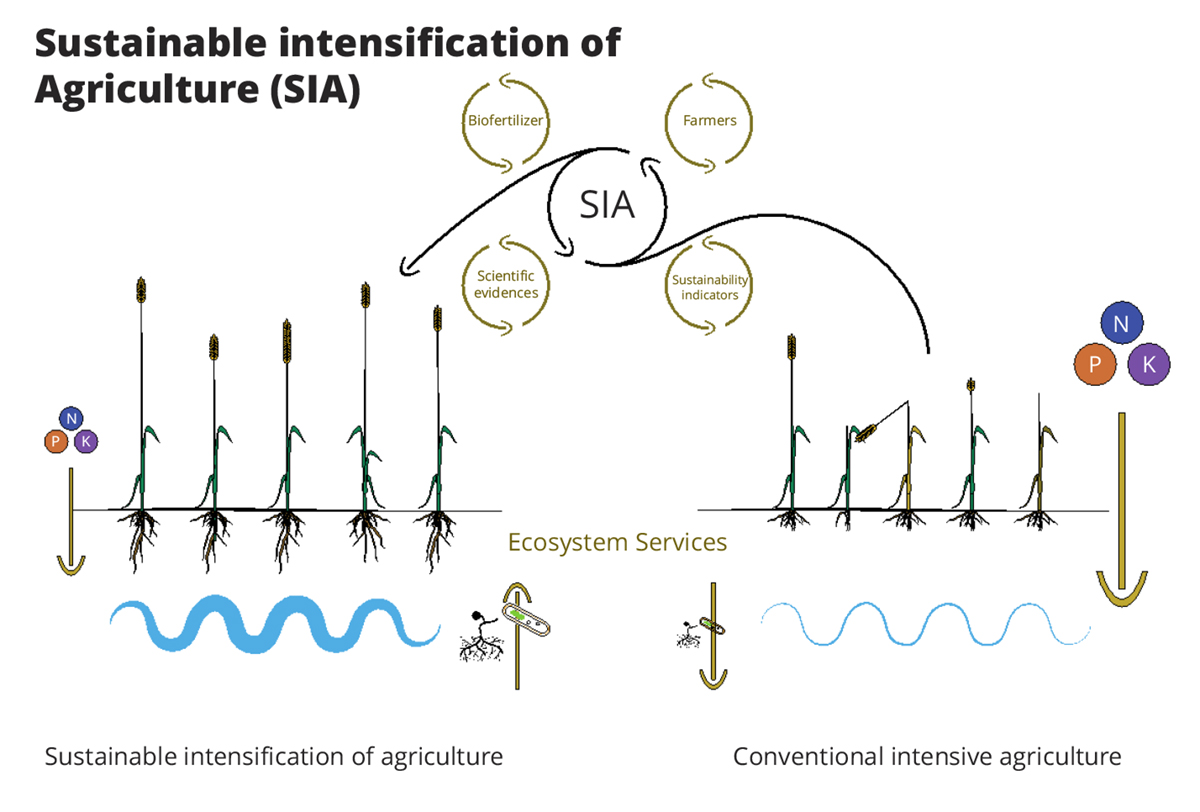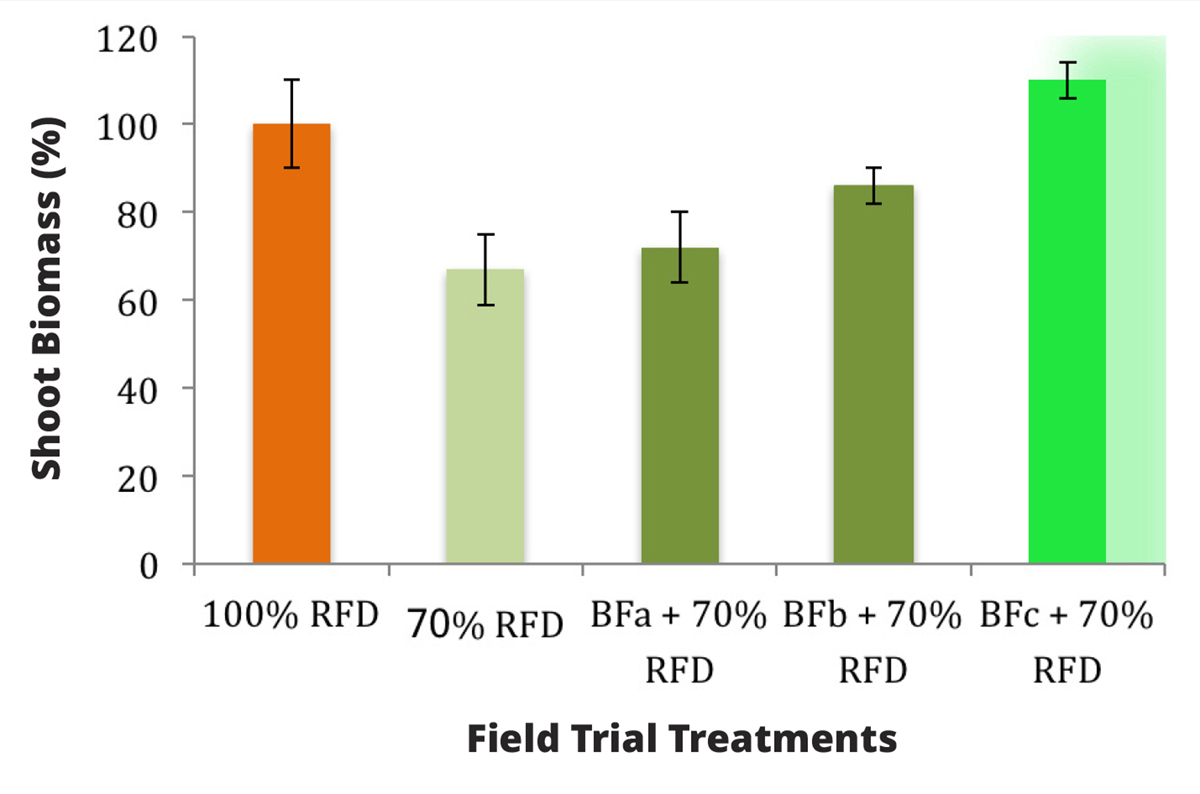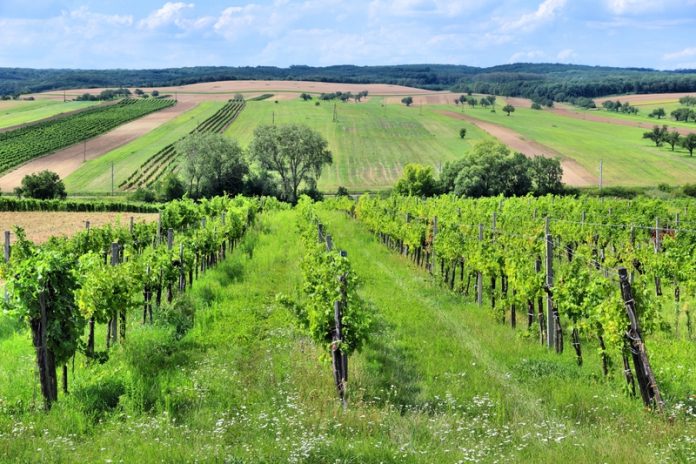Cristina Cruz, Professor Auxiliar at Faculdade de Ciências da Universidade de Lisboa (FCUL) shares her thoughts on the sustainable intensification of agriculture (SIA) in Europe
The sustainable intensification of agriculture (SIA) is intended to strengthen food production with minimum negative environmental impacts and zero increase in land degradation. According to the European Commission (COM-2017/713), this is its latest objective for European agriculture.
However, sound supporting evidence of its advantages and tools for its implementation are not currently reaching the farmers, which may explain farmers’ low engagement with the concept. It is, therefore, essential to understand the interactions of above- and below-ground biodiversity with various farm management systems and their relationship with the ecosystem services provided. A relevant question is to understand whether soils that have been subject to intensive agriculture will increase and improve below-ground biodiversity, which would represent a key justification for the promotion of SIA as a management tool to support ecosystem function.
In Europe, where agriculture is already very intensive, SIA can only be achieved through the development of new techniques targeted at increasing the efficiency of use of the available resources in order to produce healthy food outputs with minimal disturbance to agro-ecosystems’ components. For this, we need to bring research and innovation out of the labs and into the fields and markets, to better link what we know with what we grow.

Soil, the pillar of food sustainability, is a biological system. The support and sustenance of soil’s functionality and provision of ecosystem services, related to natural, societal and productive capital, is its biological community, which, in highly managed systems, is the first to be destroyed by high levels of fertilizer, pesticides and herbicides and soil mobilisation. The recovery of a functional soil biota may represent an opportunity to increase sustainable productivity and mitigate the environmental impacts of conventional (intensive) farm systems (even though in certain EU locations this would imply a de-intensification).
Agriculture is the principal factor responsible for the 33% increase in EU ecological footprint over the last 40 years. However, at the same time, EU farmers are the guardians of environmental sustainability since they care for the natural resources (soil, water, air and biodiversity) of 48% of the EU’s land, on which all of us depend. High opportunities for SIA are found on 34% of the arable area in the EU. All the results obtained in our research indicate that biodiversity is a key to sustainability of agrosystems and that it is possible to convert intensively managed farms into sustainable ones by increasing below- and above-ground biodiversity.
However, the actors of this change must be farmers and to achieve this, they require access to this evidence in order to implement the necessary strategies to promote biodiversity and consequently farm sustainability; they need tools to convert intensive farms into more sustainable ones and indicators of that change; and they need knowledge of changing farm management, since it also involves socio-economic issues (Fig. 1). Thus, implementing the sustainable intensification of agriculture has social, scientific and technical dimensions.
In line with the SIA concept, farms rely on their natural resource capital that includes a self-sustaining and hence resource-efficient, nutrient acquisition strategy, which depends on the close interaction of plant roots with their microbiome. The plant microbiome is known to supply plants with nutrients such as nitrogen and phosphorus and increase plant tolerance to biotic and abiotic stresses. SIA may compensate for some of the reduced inputs, through enhanced soil microorganism-mediated nutrient mobilisation. This advantage would justify SIA promotion at the EU level as an attractive farmland management alternative.

However, in highly managed conventional agrosystems, the soil biological community is the first to be destroyed. Of the techniques for recovery of those soils, not many are economically viable in the farming context. Due to the influence of plants on soil microbial composition, the best way to restore soil ecology is by increasing plant diversity. It has been proven that crop rotation or crop cover are practices that stimulate crop productivity through soil enrichment.
The use of old crop varieties or the introduction of new varieties with stronger interactions with the soil biota may also contribute to the stimulation of soil vitality. However, there are situations where a stronger intervention is needed, where bio-fertilisers may be an important tool to recover soil biota, nutrient use efficiency and plant health.
Many small and big companies are intensively working to produce the best possible biofertilizer. Bioclub, a project financially supported by FCT (PTDC/AGR-PRO/1852/2014), has a multi-actor team involving international (Israel, India, The Netherlands and national (from Universidade de Lisboa) scientists, as well as companies (Soilvitae, Trichodex, Fertiprado), to develop a biofertilizer able to reduce mineral fertilizer application in 30% without affecting productivity. The first three biofertilizer prototypes were designed and produced and are being tested in field trials, which have had promising results (Fig. 2). At the moment we can say that at least one biofertilizer prototype (BFc) allowed the reduction of the recommended dose of fertilizer (RFD) by 30% without decreasing maize productivity.
More field trials are being performed with various crops (wheat, tomato, peas) in close collaboration with farmers, adjusting the experimental design to answer their questions. This challenge has been very rewarding from the scientific and social point of view. We are convinced that by the end of the project (in two years) we will have solid evidence that the combined use of bio- and mineral fertilizers may provide the fine tuning necessary to increase the resource use efficiency of EU agricultural systems where intensification is already very high.
Please note: this is a commercial profile
Cristina Cruz
Professor Auxiliar
Faculdade de Ciências da Universidade de Lisboa (FCUL)
Tel: +351 964 880 356











